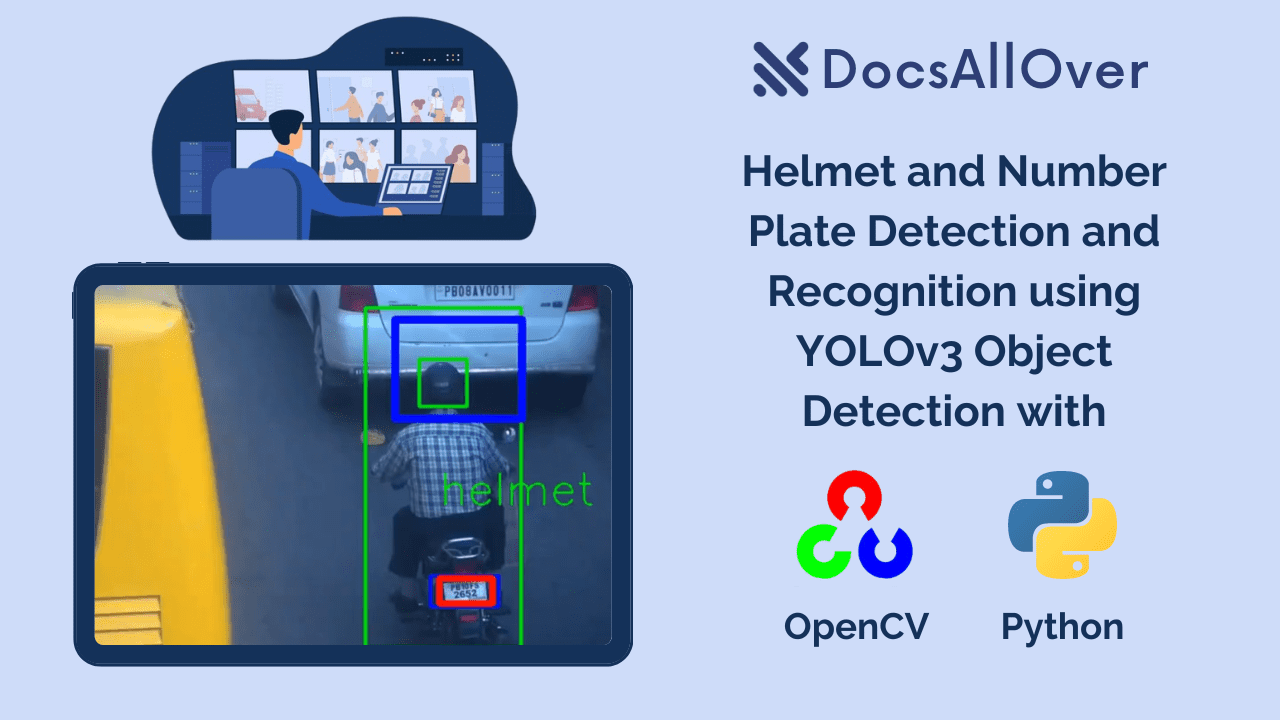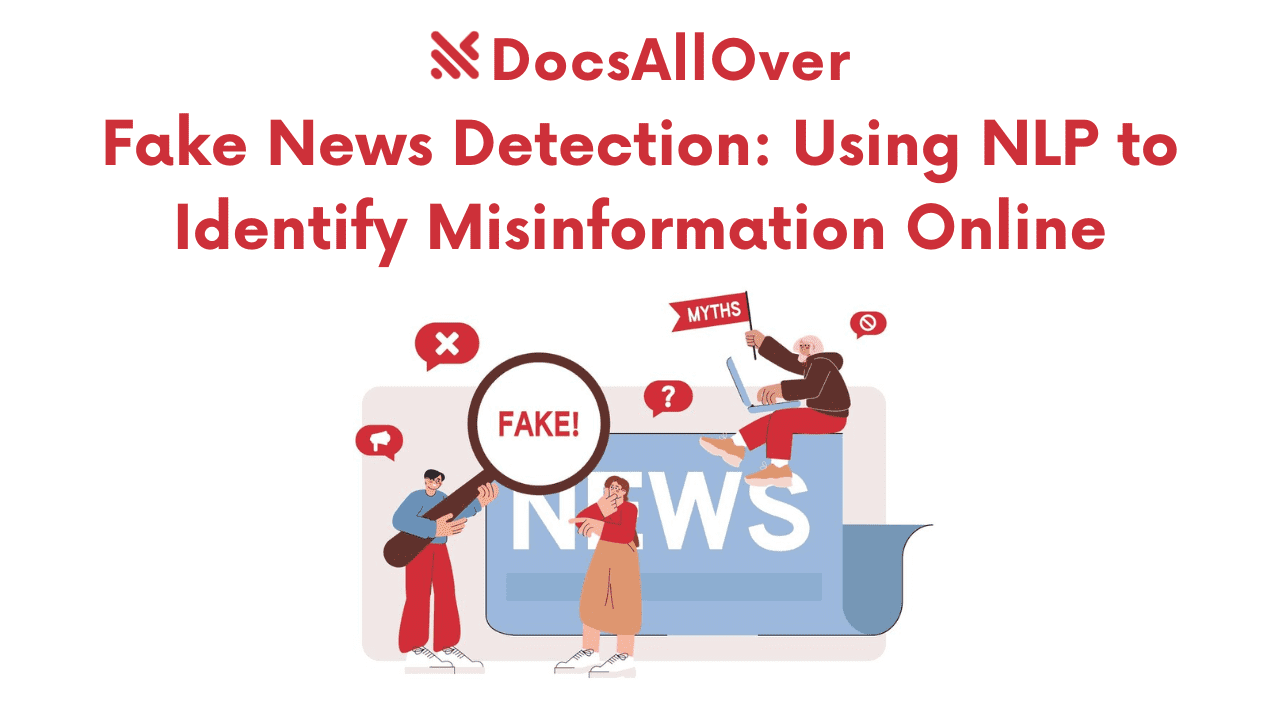Helmet and Number Plate Detection using YOLOv3 with OpenCV and Python

Buckle Up and Read On: Helmet & Number Plate Detection with YOLOv3 and OpenCV
Hitting the Road Safely: Ever wondered how technology could make our streets safer? Enter helmet and number plate detection, a powerful duo using YOLOv3 and OpenCV to revolutionize traffic monitoring. Buckle up, because this blog is about to take you on a journey of safety, efficiency, and a touch of code!
Demystifying YOLOv3:
Enter YOLOv3 (You Only Look Once), a star player in the object detection scene. Imagine you're scanning a crowded street in a single glance. YOLOv3 does the same for images, dividing them into a grid and predicting, with impressive accuracy, the presence and location of objects like helmets and number plates. It uses clever tricks like anchor boxes (different sized imaginary boxes) and confidence scores (how sure it is about its predictions) to pinpoint these objects precisely. Think of it as a super-powered vision system for computers
The Need for Speed (and Safety):
Motorcycle accidents are a harsh reality, often amplified by the absence of helmets. Statistics paint a grim picture: 42% of motorcycle fatalities involve riders not wearing helmets. Traditional methods like manual observation are slow and prone to error. This is where automated detection comes in, playing guardian angel on the asphalt.
YOLOv3: Your Eyes on the Road:
Imagine a system that can spot a helmet in a blink or read a number plate in a flash. That's YOLOv3, a real-time object detection algorithm. It uses anchor boxes and confidence scores to pinpoint objects in images, like a hawk scanning the sky. Think of it as having eagle-eyed AI assistants monitoring every lane!
OpenCV: The Image-Processing Powerhouse:
But YOLOv3 needs a partner in crime, and that's where OpenCV steps in. This open-source library is like a magic wand for images. It can smooth out noise, sharpen details, and even adjust brightness, preparing the perfect canvas for YOLOv3's detection magic.
Building the Safety Guardian:
Now, let's get down to the nitty-gritty: training a custom YOLOv3 model! We'll need annotated datasets with helmets and number plates marked like treasure maps. Then, we'll use deep learning frameworks like TensorFlow or PyTorch to train our AI detective, teaching it to recognize these crucial objects in real-world scenarios.
Python: The Scripting Superhero:
But why Python? It's the ideal scripting language for this mission! Its clear syntax and powerful libraries make it a breeze to implement both YOLOv3 and OpenCV. Plus, Python code snippets are like secret formulas, letting you peek under the hood of this amazing technology.
Ready to Roll?
This blog is just the starting point. We've explored the importance of helmet and number plate detection, demystified YOLOv3, and highlighted the magic of OpenCV and Python. Now, it's your turn to dive deeper, experiment with code, and maybe even build your own safety guardian! Remember, every line of code, every helmet detected, every number plate read, contributes to a safer future on the road. So, buckle up, embrace technology, and let's make our streets safer, one pixel at a time!
Gear Up for Safety: Detecting Helmets and Plates with AI!
Get ready to dive into the world of Python, YOLOv3, and computer vision! This blog will guide you through building a helmet and number plate detection system – a perfect project for aspiring programmers and AI enthusiasts.
But why is this important? Helmets save lives, but some riders skip them. This system uses AI to find those riders without helmets, detect their number plates, and (imagine this!) even send e-challans (with proper legal frameworks, of course). Pretty cool, right?
So, how do we do it? We'll break it down step-by-step:
- Setting Up: We'll create a virtual environment and install the necessary libraries like YOLOv3 and OpenCV.
- Code Time: We'll write the magic code that tells the computer how to spot helmets and plates in images.
- Results: We'll see the system in action, detecting helmets and plates like a hawk.
- Bonus: You can download the entire source code to tinker and explore further!
Create a conda environment and install the required libraries
Code for Helmet and Number Plate Detection and Recognition
Here's a breakdown of the code, explained in a simpler and more informative way:
-
1. Gather Your Tools:
- Lines 1-8: Import the necessary libraries, like OpenCV for image processing, TensorFlow for deep learning, and more. Think of them as the essential ingredients for the recipe.
-
2. Prepare the Brains:
- Lines 10-14: If you have a GPU (a powerful graphics card), let TensorFlow use it for faster processing. It's like giving your computer a turbo boost.
- Lines 12-14: Load the pre-trained YOLOv3 model, which is like a brain that's already learned to detect bikes and number plates. It's like giving your computer super-vision.
- Lines 17-18: Load a separate model specifically trained to detect helmets, ensuring accurate identification.
-
3. Set Up the Camera:
- Line 20: Create a "VideoCapture" object, like a virtual camera that can capture video frames. Think of it as your computer's eyes.
-
4. Get Ready to Record:
- Lines 23-27: Set up a "VideoWriter" object to save the processed video frames, creating a new video file that shows the detections in action. It's like your computer's personal movie studio.
-
5. Helmet Check!:
- Lines 29-37: Define a function that takes an image and uses the helmet detection model to determine if a helmet is present. It's like asking your computer, "Hey, is that person wearing a helmet?"
-
6. The Detection Loop:
- Lines 39-40: Get the output layers from the YOLOv3 model, which will provide information about detected objects. It's like getting the computer's detailed observations.
- Lines 46-49: Grab a frame from the video, resize it for processing, and record its dimensions. It's like your computer taking a snapshot and noting its size.
- Line 51: Prepare the image for the model by converting it into a "blob," a format the model can understand. It's like translating the image into the computer's language.
- Lines 53-54: Feed the blob into the YOLOv3 model and let it do its magic, identifying objects within the image. It's like asking the computer, "What do you see?"
- Lines 60-76: Extract the detection results from the model, including object classes (bike, number plate) and their locations in the image. It's like the computer sharing its findings.
- Line 78: Apply a technique called Non-Maximum Suppression to filter out overlapping detections and keep only the most confident ones. It's like helping the computer avoid confusion.
- Lines 80-99: Draw green boxes around bikes and red boxes around number plates, highlight helmet detections, and print relevant information. It's like your computer visually pointing out what it's found.
- Lines 102-103: Write the processed frame into the output video file, creating a visual record of the detections. It's like your computer saving its observations for later.
- Lines 105-106: Allow the user to stop the process by pressing the ESC key, giving you control over the detection session.
Result :
Got any questions about Helmet and Number Plate Detection? We're happy to help! Shoot us an email or connect on LinkedIn - we're always eager to chat about AI and road safety.
And that's a wrap on this blog, folks! We hope you found it informative and maybe even sparked a new interest in the world of computer vision. Remember, knowledge is power, and the power to detect helmets and plates just might save a life.




